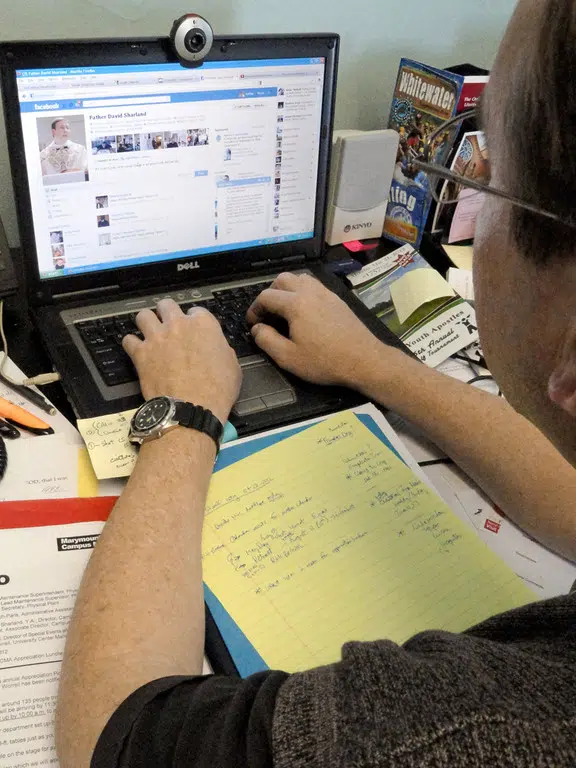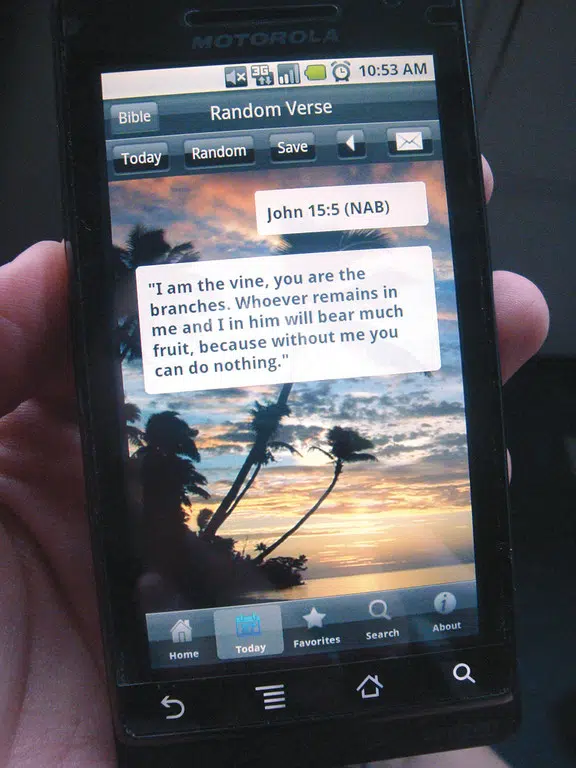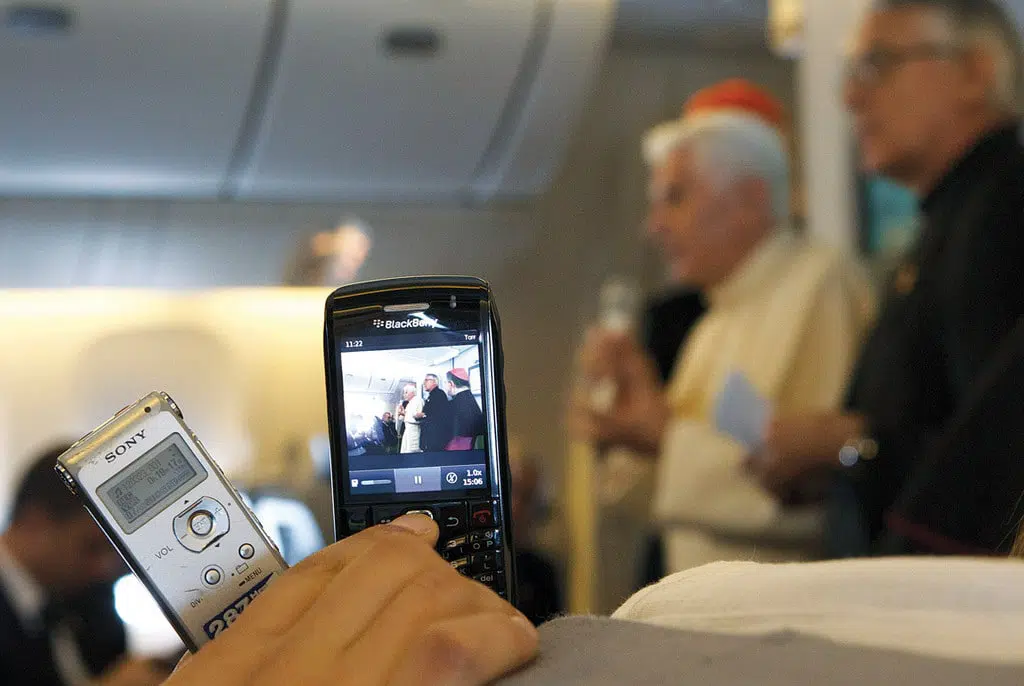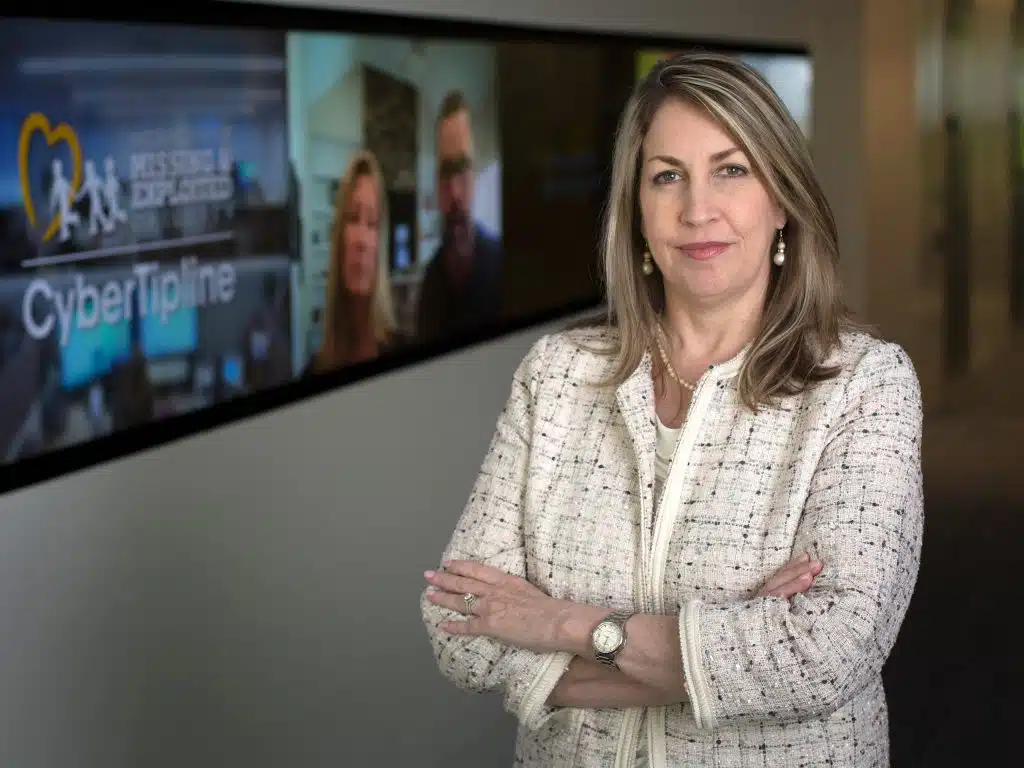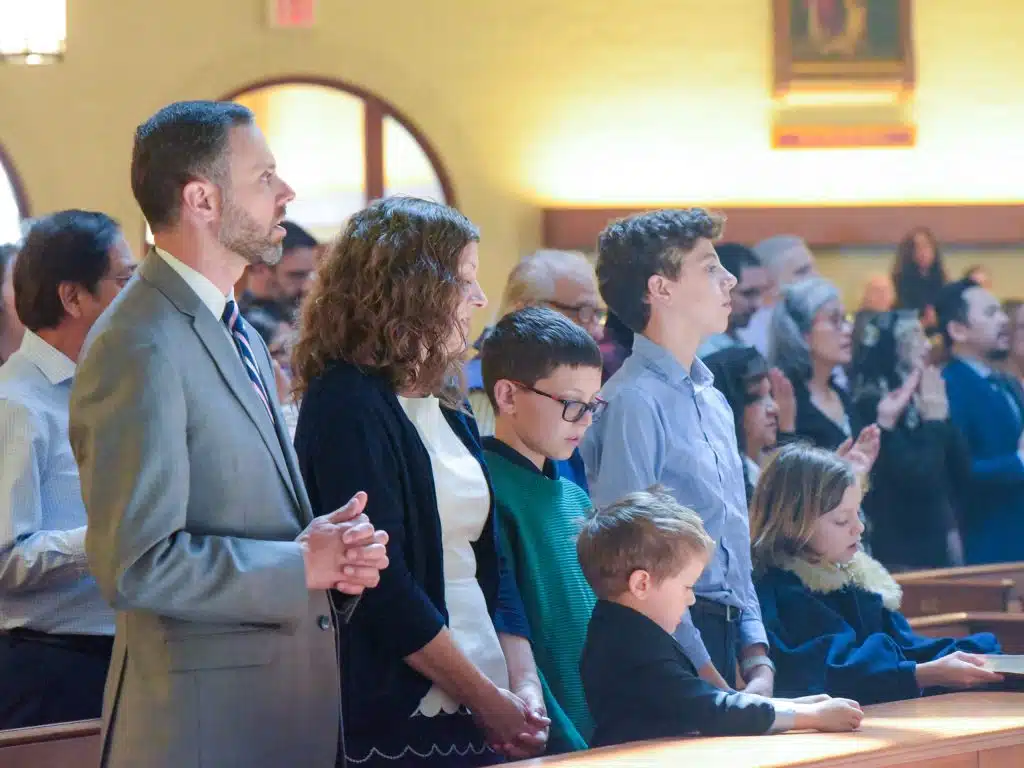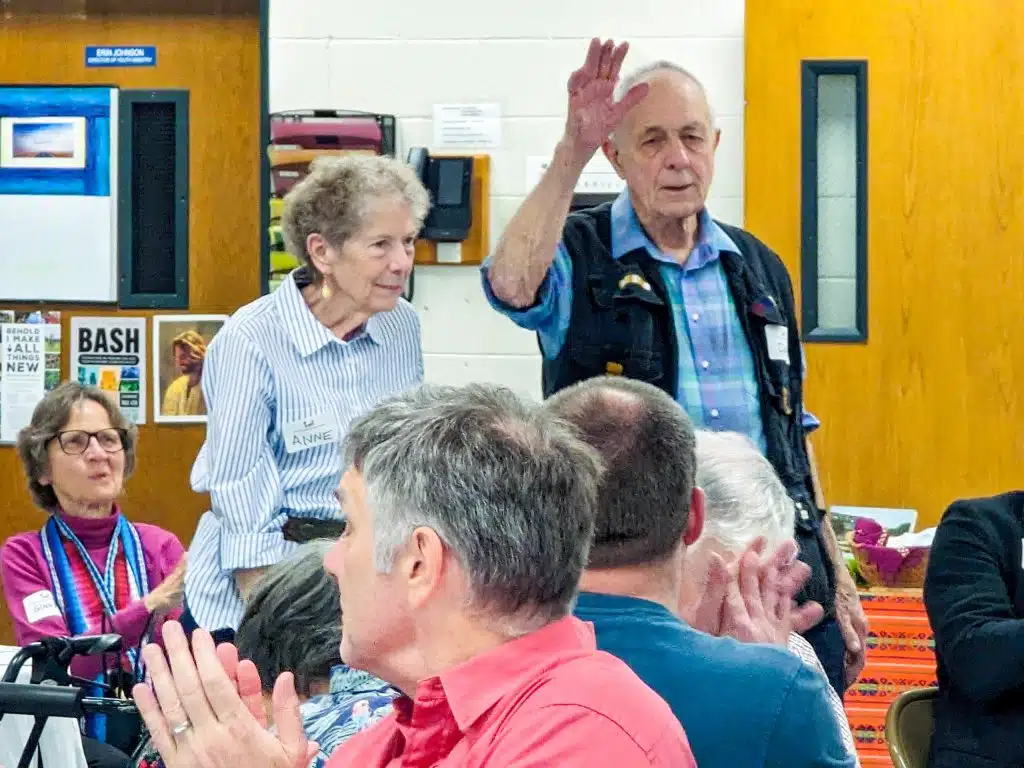A lot of ministry depends on meeting people where they are.
The diocesan young adult Catholic Sports Club unites young
people and clergy on the basketball court and soccer field.
Theology on Tap brings speakers to bars. The Legion of Mary
goes door-to-door to visit Catholics in their own homes.
Not to be overlooked, ministry also overlaps into the virtual
world, with social media enabling priests to meet people
where they are online – most notably Facebook and Twitter,
and through websites and blogs.
Father Steve Schultz (FrSteve Schultz on Facebook and
@FatherSchultz on Twitter), parochial vicar of St. Timothy
Parish in Chantilly, uses social media as precisely that – a
way to connect with the community where it is congregating.
And, to the professed delight of those who are his “friends”
and “followers,” the informal atmosphere of the Internet
allows Father Schultz’s personality to shine through his
updates.
A tweet from last week proclaims: “I’m on the twitter now!
Follow me! (Matthew 4:19).” During Lent, he reminded people
of confession: “Time to hit the sin bin! The light is on for
you, people!”
He’s shared quotes from G.K. Chesterton, audio of some of his
homilies (only the good ones, he said) and a picture of Pope
Benedict XVI wearing the sombrero from the Holy Father’s
recent trip to Mexico.
Father Schultz said he appreciates social media as “an
appropriate avenue of communication.”
“Especially a lot of the young people in my parish – that’s
how they want to get ahold of me,” Father Schultz said. “It’s
what they are using, so we have to meet them where they are
and use the technology to keep in touch and to promote
(events) and to keep them connected.”
“People are now coming up and saying, ‘I’ve been following
you on Facebook for two years,'” said Father Stefan P.
Starzynski (Stefan Starzynski on Facebook and @FatherStefan
on Twitter), parochial vicar of St. Mary of Sorrows Parish in
Fairfax. “I used to think (social media) was completely
impersonal, but if used correctly, it’s a way to foster
community and friendships rather than take it away.”
Active on both Facebook and Twitter, as well as in the
blogosphere, Father Starzynski uses social media both as a
ministry tool and as a forum to post about his likes and his
interests.
“People want to feel like they know their priests. They want
to feel like they’re part of the priests’ life and part of
the parish life,” he said. “When they accept you as a human
being then they’re more likely to understand what you have to
say.”
As a result of better knowing the person behind the collar,
Father Starzynski’s 4,834 friends might click on the YouTube
link celebrating last Monday’s St. George feast day. Or the
video refresher on the beatitudes. Or read an original poem
by Father Starzynski. Or link to an interview with New York
Cardinal Timothy Dolan.
“I give them things to think about,” he said. “I give them
things from the secular world. I give them things from the
religious world. I give them things from my personal world.
People can follow my Facebook and get the daily sense of
what’s happening in the Church. I almost become a collecting
board.”
As far as parish life goes, social media helps Father
Starzynski and St. Mary of Sorrows promote parish events. It
helps him communicate with couples preparing for marriage (he
often encourages them to “friend” him via their smartphones
while he is meeting with them). Then, later, he may post a
photo of the wedding or of a baptism to connect the community
with the event and the ministry he is performing at the
parish.
And he is able to be connected in prayer with those who need
them.
“I get prayer requests from all over the place every day,”
Father Starzynski said.
By “all over the place,” he means from places like Malaysia,
from where he received a message last week asking him to pray
for someone’s family member.
“You just kind of feel like you’re touching lives in tons of
ways.”
Both Fathers Schultz and Starzynski agree that social media
can be a powerful tool of evangelization, especially the new
evangelization, as the re-igniting of the faith of those who
are already Catholic continues to be a top priority in the
Arlington Diocese.
Status updates, links, tweets and posts can “keep issues
(such as the recent mandate from the department of Health and
Human Services) in the forefront,” said Father Schultz. “Even
though every little status update and link is just a blip,
just a moment in time, I think when people are clicking
through, it’s really having an impact.”
Being distracted for God
Though the Internet is notorious for its distractions, an
advantage of priests ministering online is that they can help
promote “being distracted by something for God,” said Father
William B. Schierer, parochial vicar of Our Lady of Hope
Parish in Potomac Falls (FatherWilliam Schierer on Facebook).
“Every time I post something (such as an image of St.
Faustina on Divine Mercy Sunday), 500 people are going to see
it,” he said. “They’re encountering a picture of Christ. We
all know the dangers and temptations of the World Wide Web,
and there they are encountering a picture of Christ.”
On the 85th birthday of Pope Benedict XVI, Father Schierer
posted a prayer for the Holy Father.
“If I was to tell them in real life, ‘Go read this,’ they’re
not going to do it,” he said. “But online you want to click
on the link, take the minute-and-a-half to read what’s there.
People are used to reading online.”
For parish life, Father Schierer uses Facebook to manage the
youth group and post YouTube clips or reminders. He times his
updates strategically, posting when he knows students will be
out of school and surfing the Web at home or checking for
social media updates on their phones.
At the same time, however, while Father Schierer is catering
to the young people by having an online presence, he is
thoughtful about the kind of message he might be sending –
even by something as basic as not posting late at night or
being Facebook friends with young children.
Much of these standards he learned from watching the example
of other priests, including Father Brian Bashista, vocations
director.
Part of the problem with social media is that it gives youths
“a false sense of relationship,” said Father Bashista (Fr.
Brian Bashista on Facebook). “Facebook is substituting for
authentic relationships and friendships.”
But while Father Bashista said social media is a “mixed
blessing,” he did acknowledge that it is an effective and
easy way of establishing initial contact with a person who is
considering the priesthood.
“It really is, for me, just kind of an introductory media,”
he said. “And when others want to use it to build a
relationship, I don’t go there. It’s a very good, easy way to
establish at least initial contact.”
Using Facebook events are effective, too, he said, adding:
“This generation of youth and young adults just does not use
email unless they graduate from college and are in a work
world.”
And even that is changing.
Father Bashista said the Vocations Office has noticed a trend
in young people moving away from Facebook, even, and instead
toward texting only. As a result, the office is exploring a
“blast text” option of getting information to young people.
“It’s so amazing how the technology is moving so quickly that
email is so old and now Facebook is becoming (old),” he said.
Now that people can attach photos to text messages, they
don’t need Facebook to share their pictures anymore.
“This 47-year-old priest is just trying to stay in pace with
these young people,” he said. “We want to be part of the
conversation, so we have to be attentive to that media.”
Social media dangers
While using social media can have a lot of positives for
priests, ministering online still comes with dangers and
risks.
“I think it’s very important to be prudent with the things
that you’re posting,” Father Schultz said. “It’s easy
… to get into a fight on Facebook or post something
that’s going to be incendiary.”
The challenge is to be “inviting and truthful” and to
communicate the message of God in a way that will encourage
thought, not dismissal, he said.
When counseling priests and seminarians on their social media
use, Father Bashista advises them to use it with “a
discerning and prudent heart … and in proper
moderation,” he said. This means not engaging people after a
certain time of night and not letting social media substitute
for real, personal relationships.
“You can’t text parishioners after Mass to engage them in
conversation,” he said. “We have to be relational.”
Father Schierer agreed, adding that what Facebook does is
make him available to parishioners in an alternate forum.
“I’m not pushing myself on them at all,” he said. “It’s a
different kind of availability.”
For some of the younger priests who went through seminary
with a Facebook account, using social media in ministry is
not a big stretch. When Father Schultz, who was ordained in
2009, went on retreat last weekend, he posted it on his wall,
asking for prayers and, in turn, receiving comments assuring
him he would get them. But for others, it’s been a complete
surprise.
“I never thought that this would be part of my priesthood,”
said Father Starzynski, who was ordained in 1996. “But I
think it’s almost becoming part and parcel of how you do
ministry.”
